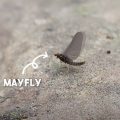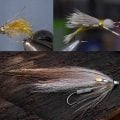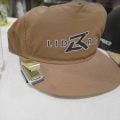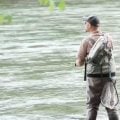Prospecting for Trout on New Water
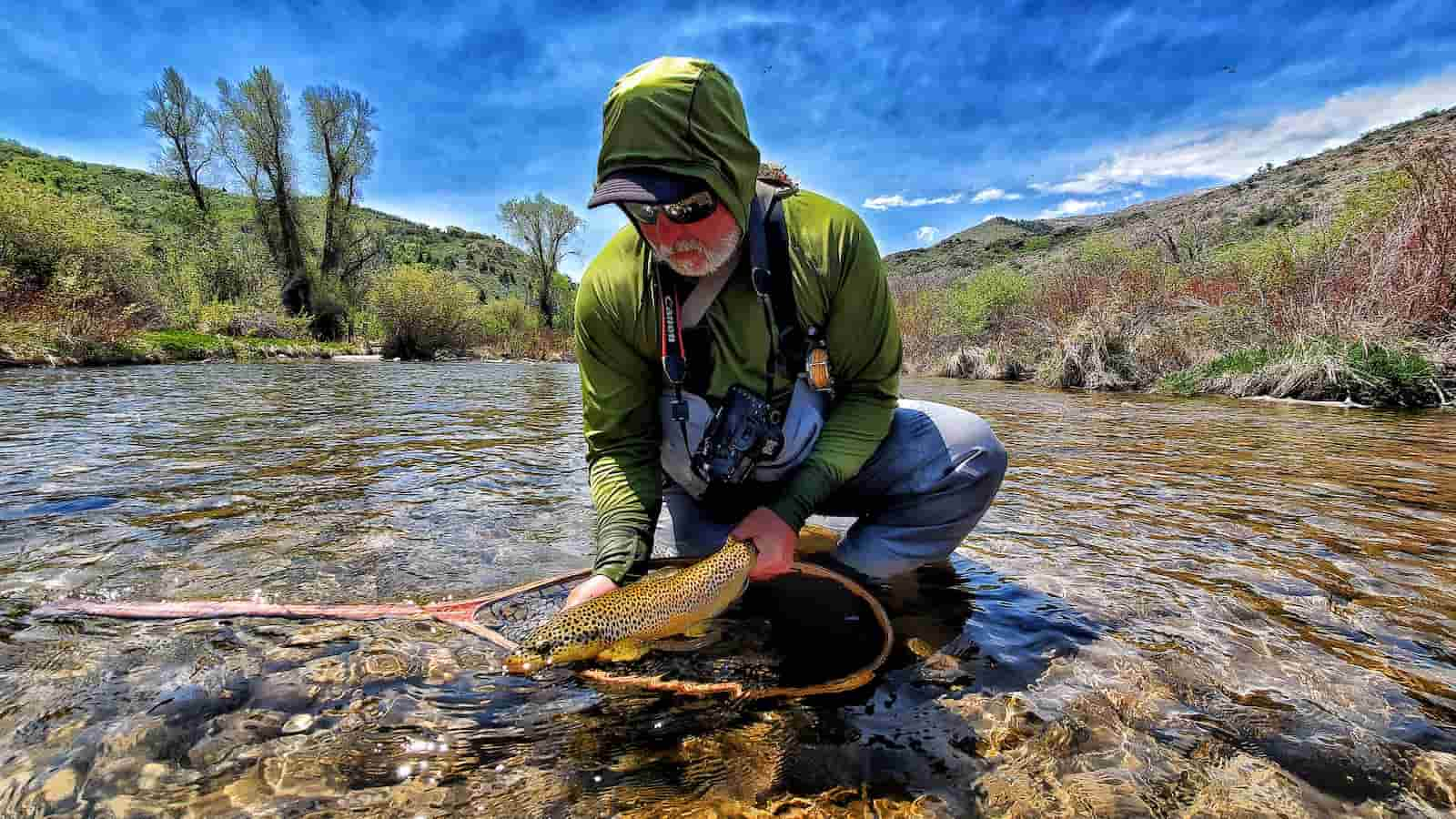
Image by Mike Doughty
Have you ever tried to put together a jigsaw puzzle? You dump out the box on a table, look at the picture on the cover of the box, and then stare at the pile of pieces. Where do you even start? This is exactly how most fly anglers feel the first time they fish a new river.
Trying to catch trout in water you’ve never fished before is like trying to find treasure without a map. There is no “X” marking the spot, no wise sage to tell you where to cast or what fly to use. You can, of course, try randomly casting flies and hoping for some sign of life. But, just like starting with the corner pieces of that puzzle, you can be a lot more productive catching trout on new water by starting in the right places with the right techniques. In short, you need to prospect.
Narrow It Down
The first step to prospecting for trout is narrowing your options. Instead of taking on a giant section of river—randomly dragging, drifting, and otherwise probing every deep hole and decent looking pool that you find—divide the water and take smaller bites.
All rivers and streams are made up of the same trout-holding water: slow-moving pools, deep holes, rapids/riffles, riverbanks, and structure. All are prime areas for trout to both hold and feed. Choose one of these particular chunks of water and fish it well.
Unless you’re fishing during a cold front or during the hottest point of the day, the bulk of trout activity in any river or stream is usually along the bank. It’s where fish can easily find food, cover, and safety from both the current and from predators. This is where you should start. Target areas where current is flowing at roughly a slow walking pace and where you can easily see structure. This can include undercut banks, logs, or large rocks just off the bank, or any sort of sudden drop-off into deeper water. Areas like this are likely to get you into a fish within your first couple of casts. If you don’t have any luck in these spots, move out towards the center of the river, working your way through the deep pools and along any mid-river structure until you find out where trout are hiding.
Whichever spot you choose to fish, no matter how perfect the stretch looks, don’t fish it for more than an hour or two. Your goal when prospecting a new stream is to find active fish, not to hammer away at one spot until you finally get a trout to eat. Think of it like speed dating. Spend short amounts of time getting a feel for multiple areas. Once you’ve done this, you can pick out a few that tickled your fancy and spend a bit more time getting to know them down the road.
Nymphing and Streamer Fishing on New Waterways
As much as we all like to fish with dry flies, when you’re trying to find active fish on a new body of water you should be fishing where they live. On any given river, trout only feed on the surface for about 2% of their lives with the other 98% percent of their feeding happening below the surface. Whenever you’re looking for fish on a new waterway, your best bet for success is fishing with nymphs and/or streamers.
When nymphing new spots, cover as much water as possible—especially when you don’t know where the fish are. Tightline techniques like Czech-nymphing and bottom bouncing can be effective but only cover a small amount of water at a time. As such, you’re better off going back to basics with a strike indicator rig. Start by attaching an indicator to your leader at half-again the depth of the water you’re fishing (i.e in 2 feet of water, set your indicator at 4 feet, in 4 feet of water set your indicator at 6 feet etc.) and then tie on two basic nymph flies. These should be general patterns that represent a variety of different insect nymphs such as a Beadhead Prince Nymphs, Pheasent Tails, Hares Ears, and Midges. Cast your rig into the water and then drop slack into your mends so that you’re flies drift along as large a section of water as possible. If you don’t get any strikes after 10 or 15 drifts, mix up your fly patterns and try again with the same drifts and then move on.
If you’re fishing with a streamer, choose a less elaborate pattern that imitates multiple food sources. Flies like a Wooley Bugger, Clouser Minnow, or a Zonker are great for this because they can mimic a multitude of baitfish and come in a variety of sizes and colors. Cast and strip your streamers along and through likely areas, varying your stripping rhythm, adding the occasional dead drift and even swinging the fly through runs where appropriate. The goal here is, of course, to get a strike. But even seeing a trout chase or roll on your fly can give you an idea of how active the fish are and what food sources they’re interested in .
Drifting Attractor Patterns
If you’re a “dry or die” type of angler that insists on fishing dry flies in a new body of water (respect), stick with basic attractor patterns. Unless you’re actually seeing fish rise up to a particular insect, flies like the Parachute Adams, the Stimulator, and even large foam flies like a Mutant Stone or a Chubby Chernobyl are you’re best bet at getting a trout to at least come up to check out your fly.
As with nymphing, drift your dry flies for as long as you can. Start by casting them slightly upstream of any likely looking piece of water and then mending and dumping slack into your line as the fly drifts down into the sweet spots. Try to drift through the entire section of water you’re fishing and if you don’t get at least a look or tentative poke from a rising trout after a couple drifts, move on to the next run until you strike pay dirt.
Find Your Water
One of the most satisfying things about fishing new water is putting it all together. You gather information, you start catching fish and finding some favorite spots, and before you know it the river becomes like an old friend. But before you can make a river into a lifelong companion, you’ve got to become acquainted with it. While prospecting a new piece of water can be frustrating, with patience and persistence you can start to put the puzzle together and eventually make it your own.








